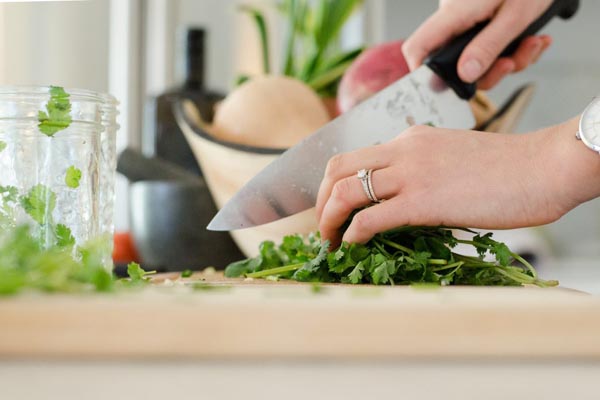
Finding the right knife as a beginner can be an overwhelming task. With numerous options available in the market, it’s easy to get confused and end up with a knife that doesn’t suit your needs. In this guide, we’ll help you navigate through the world of knives and make an informed decision. From understanding the different types of knives to considering essential factors, we’ll cover everything you need to know to find the perfect knife for your needs.
How to Find the Right Knife for Beginners?
Finding the right knife involves considering various factors, understanding the different types of knives, and evaluating your specific requirements. Here are the steps to guide you in making the right choice:
1. Identify Your Purpose
Before diving into the world of knives, determine your primary purpose for the knife. Are you looking for a versatile chef’s knife for everyday use, a specialized knife for a specific task, or a compact pocket knife for outdoor adventures? Identifying your purpose will narrow down your options and make the selection process easier.
2. Understand the Different Types of Knives
To make an informed decision, it’s crucial to understand the various types of knives available. Some common types include:
- Chef’s Knife: An all-purpose knife suitable for chopping, slicing, and dicing.
- Santoku Knife: Similar to a chef’s knife but with a flat cutting edge and unique design for precise cuts.
- Paring Knife: Ideal for peeling, trimming, and intricate tasks.
- Bread Knife: Serrated edge designed to slice bread without crushing it.
- Utility Knife: Versatile knife for smaller tasks that don’t require a full-sized chef’s knife.
3. Consider Blade Material
The blade material significantly impacts a knife’s performance and durability. Stainless steel is a popular choice for its corrosion resistance, while high-carbon steel offers excellent sharpness retention. Additionally, some knives feature ceramic blades known for their lightweight and razor-sharp edges.
4. Evaluate Handle Comfort and Material
A comfortable handle is essential for prolonged knife usage. Handles are available in various materials, such as wood, plastic, stainless steel, and composite materials. Consider the grip and balance of the knife in your hand to ensure a secure and comfortable grip.
5. Check for Proper Balance
A well-balanced knife ensures better control and reduces strain on your hand and wrist. To check the balance, hold the knife at the bolster or heel and see if it feels equally weighted.
6. Size Matters
The size of the knife matters, especially if you have specific tasks in mind. Larger knives are ideal for cutting larger ingredients, while smaller knives offer precision and control for delicate tasks.
7. Research Brand Reputation
Research and choose a reputable brand known for producing high-quality knives. Well-established brands often provide better craftsmanship and materials.
8. Read Customer Reviews
Customer reviews can offer valuable insights into a knife’s performance and durability. Look for reviews from other beginners to understand how user-friendly the knife is.
9. Set a Budget
Knife prices can vary significantly. Set a budget before you start shopping to avoid overspending and narrow down your options to knives within your price range.
10. Visit a Specialty Store
If possible, visit a specialty store to handle and test different knives. This hands-on experience can help you find a knife that feels comfortable and suits your needs.
11. Seek Expert Advice
Don’t hesitate to seek advice from professional chefs or experienced knife users. They can provide valuable guidance based on their practical knowledge.
12. Explore Online Resources
Numerous online resources, including forums and videos, provide detailed information and reviews on various knife models. Take advantage of these resources to make an informed decision.
13. Consider Safety Features
Safety is paramount when handling knives, especially as a beginner. Some knives come with safety features, such as finger guards or ergonomic designs that reduce the risk of accidents.
14. Test the Sharpness
A sharp knife is essential for efficient and safe cutting. Check the sharpness of the knife before purchasing, and consider investing in a good quality knife sharpener for regular maintenance.
15. Check for Warranty
A good warranty provides assurance of the knife’s quality. Look for knives with extended warranties, as it indicates the manufacturer’s confidence in their product.
FAQ’s (Frequently Asked Questions)
Q: How do I choose the right knife for vegetables and fruits?
A: For vegetables and fruits, a versatile chef’s knife or a Santoku knife is an excellent choice. Look for a knife with a sharp, thin blade that allows for precise cutting and chopping.
Q: Which knife is best for meat?
A: When it comes to meat, a boning knife or a butcher knife with a strong and slightly flexible blade is ideal for trimming, deboning, and slicing.
Q: What type of knife should I get for camping and outdoor activities?
A: For outdoor activities, a compact and sturdy folding knife or a fixed-blade survival knife will serve you well. Look for a knife with a durable handle and a sharp, rust-resistant blade.
Q: How often should I sharpen my knife?
A: The frequency of sharpening depends on how frequently you use the knife. As a general guideline, regular knife users should sharpen their knives every 1-3 months.
Q: Is a higher-priced knife always better in quality?
A: Not necessarily. While expensive knives often come with better materials and craftsmanship, you can find high-quality knives at reasonable prices too. It’s essential to balance your budget with the knife’s intended use.
Q: Can I put my knives in the dishwasher?
A: It’s generally not recommended to put knives in the dishwasher, as the high heat and harsh detergents can damage the blade and handle. Handwashing with mild soap is the best way to clean knives.
Conclusion
Finding the right knife for beginners involves considering your needs, understanding the different types of knives, evaluating various factors, and seeking expert advice. By following the steps outlined in this guide, you can confidently choose a knife that suits your requirements, making your culinary experiences more enjoyable and efficient.







